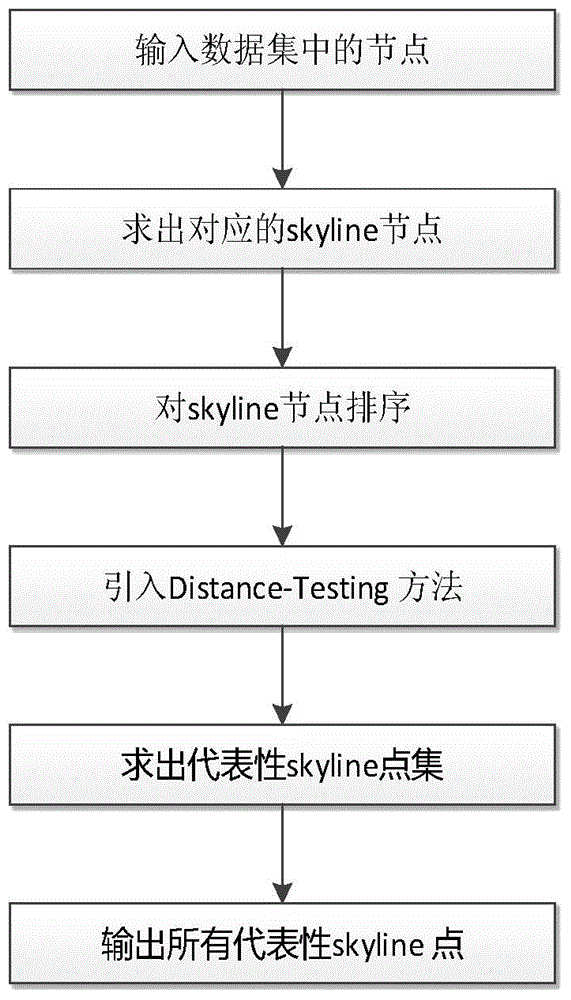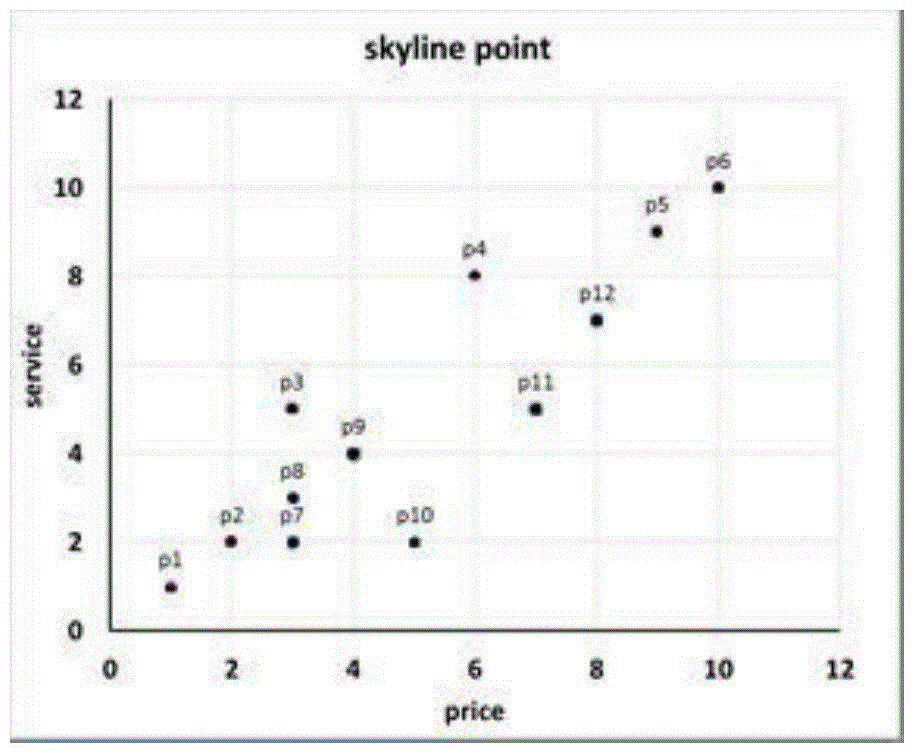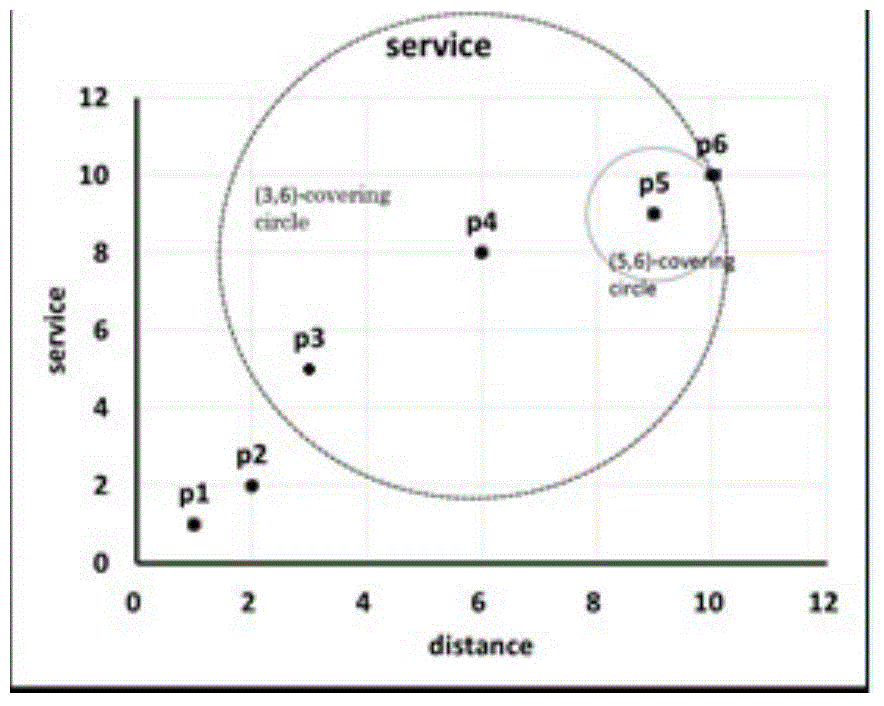Distance-based algorithm for solving representative node set in two-dimensional space
A two-dimensional, representative technology, applied in computing, instrumentation, electrical and digital data processing, etc., can solve the problems of difficulty in guaranteeing the effectiveness of TRS, restricting the scope of application of the algorithm, and high time complexity.
- Summary
- Abstract
- Description
- Claims
- Application Information
AI Technical Summary
Problems solved by technology
Method used
Image
Examples
Embodiment Construction
[0023] The implementation process of the present invention will be described in detail below in conjunction with the accompanying drawings.
[0024] A distance-based algorithm for solving representative node sets in two-dimensional space, using bisection parameter search technology, introducing a Testing function to test the feasibility of distance, and redesigning a new calculation radius algorithm, so that the program Execution time is drastically reduced. Such as figure 1 As shown, the specific process is as follows:
[0025] 1. Pretreatment
[0026] (1) Calculate the corresponding Skyline point set in the data set
[0027] In a given data set, the BNL algorithm is used to find the Skyline point set that can cover the entire data set.
[0028] The general framework of the algorithm is as follows
[0029] Input: dataset G=(x,y)
[0030] Output: Skyline point set
[0031] 1.1 Sort all points in the data set according to the x value from large to small;
[0032] 1.2 Ad...
PUM
 Login to View More
Login to View More Abstract
Description
Claims
Application Information
 Login to View More
Login to View More - R&D
- Intellectual Property
- Life Sciences
- Materials
- Tech Scout
- Unparalleled Data Quality
- Higher Quality Content
- 60% Fewer Hallucinations
Browse by: Latest US Patents, China's latest patents, Technical Efficacy Thesaurus, Application Domain, Technology Topic, Popular Technical Reports.
© 2025 PatSnap. All rights reserved.Legal|Privacy policy|Modern Slavery Act Transparency Statement|Sitemap|About US| Contact US: help@patsnap.com



